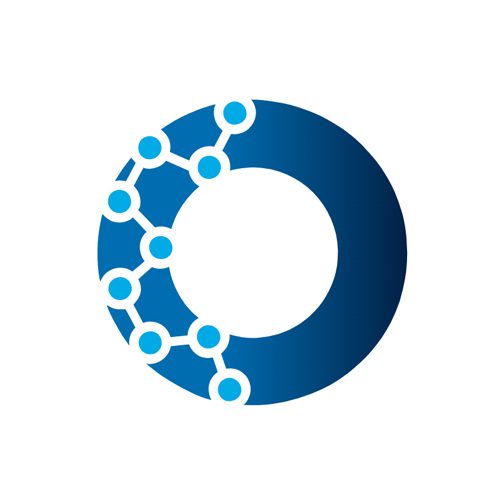In an age where instant feedback, live updates, and interactive systems dominate user expectations, software architects and developers increasingly turn to event-driven architecture (EDA) to meet these demands. Real-time systems such as chat applications, financial trading platforms, multiplayer games, and IoT networks rely heavily on event-driven paradigms for responsiveness and scalability.
With its simplicity, extensive libraries, and growing support for asynchronous programming, Python has emerged as a powerful language for implementing event-driven systems.
This blog explores how Python frameworks support EDA and help developers architect efficient real-time applications.
What is Event-Driven Architecture (EDA)?
Event-driven architecture (EDA) is a software design paradigm in which events define system behavior—state changes that users, sensors, or messages from other programs trigger. Unlike the linear request-response model, EDA relies on detecting and handling events as they occur, enabling systems to be more adaptive and responsive.
The architecture typically includes three components:
- Event Producers that generate events.
- Event Routers or Brokers that manage event distribution.
- Event Consumers that respond to those events.
By decoupling producers and consumers, EDA promotes flexibility, scalability, and asynchronous communication across services.
Core Principles of EDA
Loose Coupling
In EDA, services and components are only connected through events. They do not need to know about each other’s existence, which makes the system easier to scale and maintain.
Asynchronous Communication
Events are processed independently of their producers. This enables systems to continue operating efficiently under high load.
Event Routing
Events are routed based on predefined rules or topics, ensuring the right consumers handle them without tight integration.
Reactive Design
Applications built with EDA respond to changes immediately, offering better user experiences in real-time contexts. These principles are foundational to building scalable microservices and real-time applications in a distributed environment.
Benefits Over Traditional Request-Response Models
Event-driven systems offer several advantages over traditional synchronous architectures:
- Enhanced Responsiveness: Applications can handle user actions and system events immediately without waiting for an explicit request.
- Improved Scalability: Services can scale independently since they are decoupled and communicate asynchronously.
- Higher Availability: Failures in one component don’t cascade throughout the system, improving reliability.
- Real-Time Processing: Continuous event streams allow systems to react in near real-time without polling.
Where request-response models struggle with concurrency and load, EDA thrives by handling events asynchronously and distributing processing responsibilities.
The Role of Python in Event-Driven Systems
Python’s growing support for asynchronous programming has become a key player in developing event-driven systems. Its clear syntax, powerful libraries, and mature async features empower developers to write clean, efficient, and scalable code, making it a valuable asset.
Python’s asyncio module laid the groundwork for non-blocking I/O operations, allowing developers to handle thousands of simultaneous connections without resorting to threading complexities. This, combined with a supportive ecosystem of frameworks, has positioned Python as a go-to language for building real-time, event-driven applications.
Concurrency Without Complexity
Concurrency in traditional models often relies on multi-threading or multiprocessing, which can be error-prone and hard to debug. Python simplifies concurrency through asynchronous programming, relieving developers of thread management complexities.
This approach reduces overhead, simplifies resource management, and maintains clarity in code structure. As a result, developers can focus on solving business problems without getting bogged down in the intricacies of thread management.
Event Loops, Coroutines, and Asynchronous I/O
The event loop is at the heart of Python’s asynchronous programming model. This loop listens for events, schedules them, and delegates their handling to coroutines—functions that can pause execution and resume later.
Event loops, coroutines, and non-blocking I/O provide a foundation for creating applications that efficiently handle numerous simultaneous tasks. Python’s support for these features is especially valuable in networked applications, reassuring developers about their systems’ performance.
Several Python frameworks specialize in supporting event-driven paradigms. These frameworks offer varying levels of abstraction, flexibility, and performance and cater to different real-time applications, making them valuable tools for developers.
FastAPI
FastAPI is an asynchronous web framework built for speed and simplicity. It is ideal for building APIs that handle multiple simultaneous requests with minimal latency. With built-in support for asynchronous routes and background tasks, it is well-suited for real-time applications and services.
FastAPI also generates automatic documentation and integrates easily with WebSockets, making it an excellent choice for modern, responsive systems.
AIOHTTP
AIOHTTP is a lower-level asynchronous HTTP client and server framework that provides fine-grained control over request and response handling. It is built on Python’s async IO and supports HTTP and WebSocket protocols.
This framework is best for developers who need lightweight, high-performance solutions and are comfortable managing more of the request lifecycle manually.
Nameko
Nameko is a microservices framework designed for building distributed systems. It supports remote procedure calls (RPC) and event-driven messaging via brokers like RabbitMQ. With built-in tools for service discovery and dependency injection, Nameko simplifies the process of building and scaling microservices in an event-driven environment.
Its ability to publish and consume events makes it ideal for loosely coupled services that need to react to system-wide changes.
Celery (with Flask/Django)
Celery is a widely used task queue that supports asynchronous task execution and scheduling. It integrates seamlessly with popular web frameworks like Flask and Django, allowing developers to offload time-consuming tasks such as sending emails, processing files, or making external API calls.
Celery enables applications to stay responsive by handling background jobs in a separate worker process, promoting an event-driven approach to task management even within traditional web applications.
Real-Time Architecture in Practice
Event-driven systems are especially useful in real-time applications. A typical example is a messaging platform, where the architecture might include:
- A frontend that captures user messages and sends them over WebSockets.
- A backend that routes those messages to relevant users.
- An event broker to manage and queue message delivery.
- Worker services that log messages, analyze content, or send notifications.
This architecture ensures the system responds instantly to user actions while remaining scalable and fault-tolerant. Each component can operate independently, communicating through events and reacting as needed without centralized control.
Challenges and Considerations
While event-driven systems offer numerous benefits, they also introduce complexity in monitoring, debugging, and maintaining system integrity.
Debugging and Tracing Events
Because control flow in event-driven systems is non-linear, debugging can be difficult. Tracing an event’s lifecycle from producer to consumer often requires additional tools and strategies.
To address this, developers can use centralized logging, correlation IDs, and distributed tracing tools like OpenTelemetry or Jaeger. These tools provide visibility into how events move through the system and help identify bottlenecks or failures.
Latency, Message Ordering, and Data Integrity
Event ordering can become a significant concern in systems where timing and sequence matter. Events may be processed out of order or delivered multiple times, leading to potential data inconsistencies.
To mitigate this, event consumers should be idempotent—capable of handling repeated events without side effects. Message brokers can support guaranteed delivery and ordering by design, while techniques like event versioning, retries, and dead-letter queues ensure that errors are captured and resolved effectively.
Conclusion
Event-driven programming is at the forefront of modern software architecture, enabling developers to build responsive, scalable, and maintainable real-time systems. Developers can unlock greater flexibility and system efficiency by shifting from linear request-response models to event-driven paradigms.
Python’s powerful asynchronous capabilities and rich frameworks ecosystem make implementing EDA easier than ever. Frameworks like FastAPI, AIOHTTP, Nameko, and Celery provide diverse tools tailored for different needs, whether you’re developing microservices, background workers, or real-time APIs.
As industries demand faster, more intelligent, and more connected applications, embracing event-driven programming with Python will be a technical advantage.













